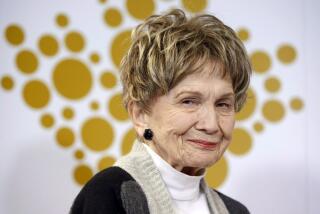Book Review: ‘Katherine Parr: Complete Works and Correspondence’

Katherine Parr
Complete Works and Correspondence
Edited by Janel Mueller
University of Chicago Press: 648 pp., $65
One of the difficulties of studying Tudor and medieval women is the silence they have left. Medieval people did not write nearly as much as historians would wish, and medieval women hardly wrote at all.
This is why a scholarly edition of Katherine Parr’s “Complete Works and Correspondence,” edited by Janel Mueller, is such a joy. Here we have one of Henry VIII’s queens — the one who survived him — in her own words, making laws as regent of England, writing confessional prayers or short childish notes as a little girl:
Uncle, when you do on this look,
I pray you remember who wrote this in your book.
Your loving niece, Katherine Parr.
Those people who have been interested in Parr may think of her as an older scholarly woman, a twice-married widow who nursed the king in his dotage, dying herself shortly after him.
But she was so much more than this! As Mueller discusses in a spirited, sympathetic introduction, Parr was a convinced and radical Protestant who used her position as queen to edge the country further away from Henry’s halfhearted reform of the church to a thorough-going, deeply felt Protestantism, working with Archbishop Thomas Cranmer to bring the prayer book in English to every church in the country, founding Trinity College in Cambridge and seeing herself a spiritual leader as well as queen.
Domestically, she was influential too. She did much to reconcile Henry with the princesses that he had named as bastards: Mary and Elizabeth Tudor, who would become Mary I and Elizabeth I. Though her faith was very different from the passionately Papist Mary Tudor, both women were scholars, and Parr encouraged Princess Mary to translate and even to publish under her own name: “Since no-one does not know the amount of sweat that you have laboriously put into this work, I do not see why you should reject the praise that all confer on you deservedly. However I leave this whole matter to your prudence…”
Mueller even suggests that the princesses learned something of ruling England by watching their stepmother in her years of power, and we can see Parr’s legacy in the scholarly politician that Elizabeth I turned out to be.
The aging, irascible Henry VIII turned against the 31-year-old widow (he had insisted on marrying before her year of mourning for her second husband was complete) and was so persuaded by her enemies that he was planning to charge her with treason and heresy — which carried a death sentence. Parr was warned in advance and denied her own opinions and her abilities: Mueller quotes the poignant contemporary account of the scene as Parr decided to play Judas to her own brain, telling the king she thought it “unseemly and preposterous for a woman to take upon her the office of an instructor or teacher to her lord and husband.…”
Parr saved her life and survived the king’s uncertain temper until his death in 1547. At that moment she was excluded from power as the ambitious courtiers gathered around the young Prince Edward and prepared for his accession. Among them was his uncle, Lord Thomas Seymour, brother to Henry VIII’s third queen, Jane. Parr had been in love with him before her marriage to Henry VIII and now, as a widow freed by the death of the king, she became his passionate lover, writing to him: “I pray you let me have knowledge near night at what hour ye will come that your portress may wait at the gate to the fields for you…”
They married in secret and she conceived a child — her first in four marriages — and died of puerperal fever after giving birth to a daughter, only 19 months into her first marriage for love. Chief mourner at her funeral was her husband’s ward, another studious Protestant girl: Lady Jane Grey.
This is a book for scholars, but anyone who cares for the history of Protestantism, or about the life of this courageous, thoughtful woman will enjoy it. Katherine Parr is one of the lesser known of Henry’s wives, far from the dramatic triangle of Catherine of Aragon and Anne Boleyn, but this collection of her writings will remind historians that Parr was an extraordinary woman of letters and passions.
Gregory is the author of many novels, including “The Other Boleyn Girl” and “The Red Queen.”
More to Read
Sign up for our Book Club newsletter
Get the latest news, events and more from the Los Angeles Times Book Club, and help us get L.A. reading and talking.
You may occasionally receive promotional content from the Los Angeles Times.






